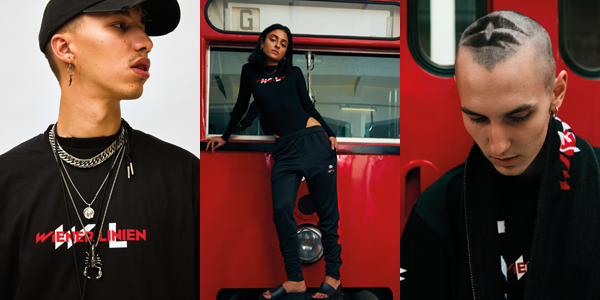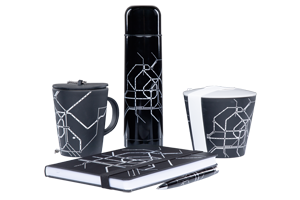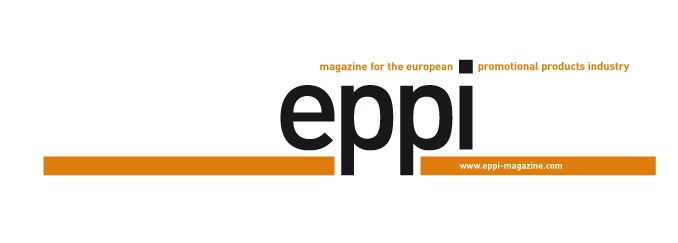Vienna’s public transport network Wiener Linien makes Austria’s capital mobile and not only convinces with a very well-developed transport network and efficient frequency: Nina Wach, Assistant Director of Corporate Communications, on courageous marketing made in Vienna including the Danube Waltz and Darknet.

Mrs. Wach, mobility is one of the key themes of the future. Vienna is repeatedly praised in this connection, because at 38% (2019) its share of public local transport lies over the European average. What do you do better than the other players?
Nina Wach: The integrated network is an important factor. We have all public transport means under our belt, which means we can coordinate them perfectly with each other. On top of this we also have a good network coverage – not only in the densely populated municipal areas, but also in the green districts on the outskirts of the cities. The distance to the next bus or train stop is not allowed to be further than 800 m. Furthermore, since we are owned to 100% by the City of Vienna, we can address themes such as climate protection and traffic planning jointly.
Wiener Linien is the top address in the capital city as far as mobility is concerned. Your company transports 2.6 mil. passengers a day via the underground, buses and trams and what’s more is one of the biggest employers in the city. Which major goals do you pursue with your communications?
Nina Wach: We communicate in a partner-like manner at eye level, very value-based, show respect and tolerance. We also emphasise in our campaigns that Wiener Linien is pleased to welcome every passenger – regardless of their nationality, religious affiliation or sexual orientation. We rely on the typical Viennese style of communications, the Vienna Schmäh: slightly cheeky, but not offensive, slightly cynical, but witty. We are very direct; we communicate courageously and openly.
Many of your measures such as the interactive video campaign on critical situations on public means of transport for example have been distinguished. Other campaigns like the song “Wir fahren U-Bahn” (We take the underground) went viral. What ingredients do you rely on for your marketing campaigns?
Nina Wach: We simply try a lot of things out. For instance, we celebrated Valentine’s Day last year by posting two football fans from Rapid and Inter Milan kissing each other on Facebook. There were very controversial opinions about this beforehand. But ultimately, the campaign went down well – and that encouraged us to carry on pursuing that line. The song “Wir fahren U-Bahn” with Rudi Nemeczek, the lead singer of the Viennese cult bank, Minisex, was a similar such experiment. We covered a song from the 1980s with veterans from the music scene and reinterpreted it for the public transport. That was a cool cooperation, which was great fun and which corresponds with our self-image.
In addition to such music videos, Wiener Linien is also active in the sound branding segment. How extensive is the acoustic brand management that won a Red Dot Design Award in 2016?
Nina Wach: First of all, we carried out an acoustic inventory of all sound generators and alarm signals in the year 2012 and then tackled these step by step together with two agencies – from signal and gong tones, to ticket machines, through to all announcements. The result is a unique sound identity, which together with musical elements from the Danube Waltz for instance has a strong association to the city. Furthermore, in the course of this project we revised the entire wording of the announcements, which all originated from the 1970s and which contained many subjunctive and impersonal phrases. The stipulations for live announcements were realigned too. It wasn’t always easy to have new elements such as the address “Dear passengers” approved by the colleagues in the control centres.
Haptic advertising is an essential element of your communications. For example, the underground collection ‘The history of Blue’ – comprising of socks, tights, scarves and a woollen hat in the material of the former seat fabric – was distinguished with the Promotional Gift Award. What makes the hearts of the people from Vienna beat fast?
Nina Wach: We keep on bringing out new merchandising collections with new designs. Our limited Darknet edition in the black and white network plan design, which we launched in 2019 with products like a pair of socks, a thermos flask or a hoody exclusively for the Christmas market at the Remise Transport Museum, was for instance very successful. The items for the Rainbow Parade in 2019 were also quickly sold-out. These included shirts and condoms with the slogan “You’re sure to come with us”. Beyond this, we also regularly use seasonal products such as woollen hats, scarves or bathing fashion for campaigns via our media channels and often play on the scarcity. Our line-up also includes trendy items such as sunglasses made from recycled plastic. Their special feature: The diamond-shaped logo on the lenses, which thanks to a special lens technology is only visible to onlookers. This item will probably not be a bestseller, but it underlines the fact that we have the courage to try out modern, innovative products. Other merchandising items such as nostalgia calendars, old bus stop signs or refrigerator magnets on the other hand are snatched out of our hands by the thousands.
How relevant are haptic messengers in the scope of the internal corporate communications?
Nina Wach: We do sometimes also use haptic items in our communications here too. For example, earlier this spring – alongside the work masks – the management gave all of the colleagues a branded mask as a small thank you for their work. This gesture went down very well. What’s more, we have also developed an own premium product line, which can be implemented by executives to thank their employees. The items include laptop cases, leatherbound notebooks and upcycling products such as crossbody bags made from old uniforms.
Does haptic advertising also play a role in the B2B sector?
Nina Wach: As we engage in a very intensive exchange with other European public transport networks, we implement various give-aways and gifts. We are especially proud of our rail tracks. They are originals, thin cross sections of a Vignol rail, chromeplated, polished, elaborately packed and accompanied by a few words about their genesis. Such a gift costs fortunes, but it is worth it to us.
 What is your conception of good haptic advertising?
What is your conception of good haptic advertising?
Nina Wach: There must be a significant association between the brand and the merchandising. This is for instance the case with our Capsule Collection, which we introduced in 2018. At the time the launch of the garments was accompanied by a music video, in which Falco’s “Kommissar” was turned into a “conductor” with a lot of play on words and 1980s feeling. The sweaters, shirts and caps address a very young target group, are strictly limited and can only be purchased at the release event. And indeed we were swamped by young hipsters at these events. That is the Z generation, many of whom don’t own a car, they quite consciously use public transport instead. And the Capsule Collection is our connection to them.
What criteria do fan items have to fulfil in order to be mobilised for Wiener Linien?
Nina Wach: In line with our brand image, we place high value on sustainability. We try to avoid productions from the Far East as far as possible, even though this is not always possible especially for high volumes, i.e. in the case of products for our 9,000 employees. More or less all of the merchandising items come from Europe, a lot of them from Austria in fact. A further criterion for sustainability is a long shelf-life of the products. They are also well made, they evoke an incredible amount of contacts – with the owner, but also with his environment. In principle, they are communicative vehicles, which express a love for public transport. Promotional products are simply unbeatable here. They quite literally even succeed in reaching the bedrooms of the target group.
// Andrea Bothe spoke with Nina Wach.
Photos: Manfred Helmer; Wiener Linien






